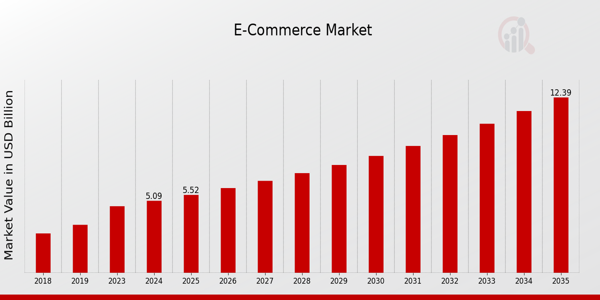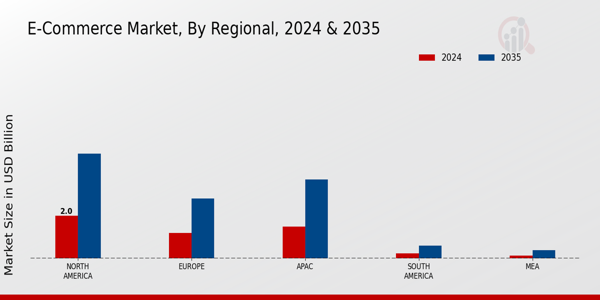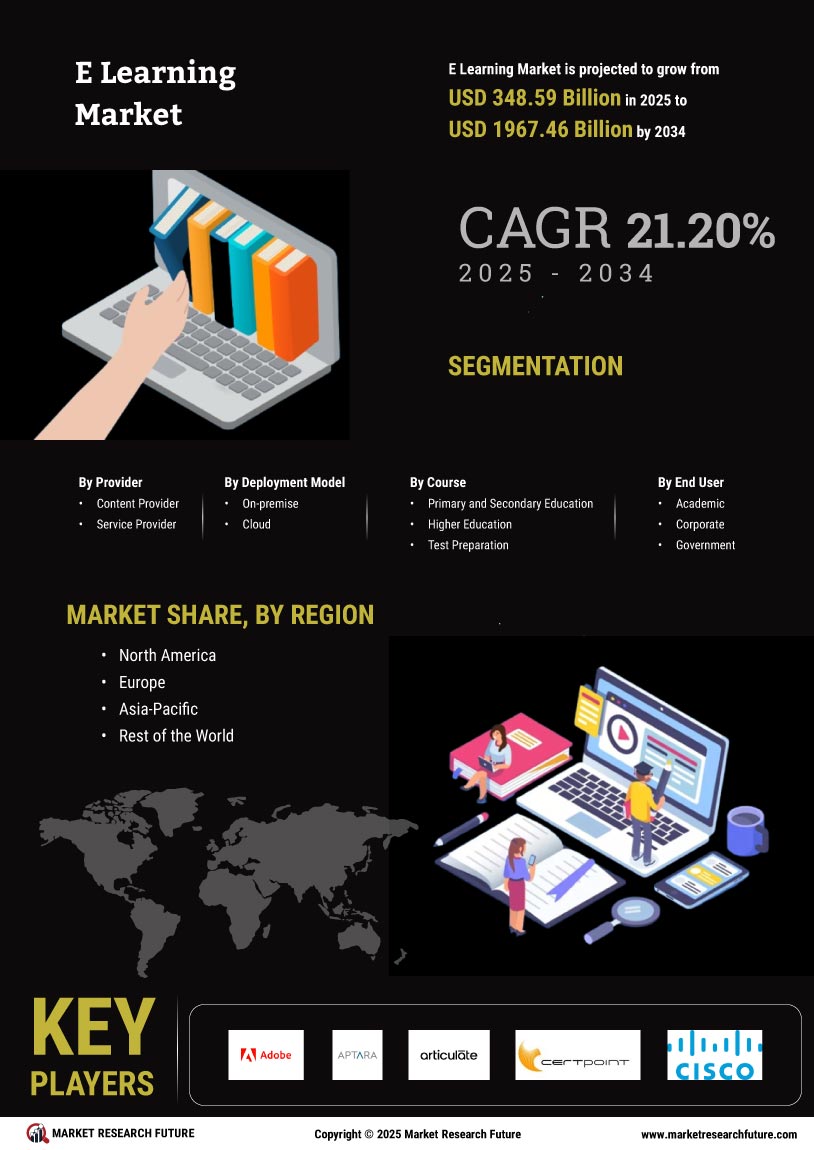E-Learning Market Overview
As per MRFR analysis, the E-Learning Market Size was estimated at 211.74 (USD Billion) in 2023.
The E-Learning Market Industry is expected to grow from 222.08(USD Billion) in 2024 to 375 (USD Billion) by 2035. The E-Learning Market CAGR (growth rate) is expected to be around 4.88% during the forecast period (2025 - 2035).
Key E-Learning Market Trends Highlighted
Several essential market factors, including the growing availability of the internet and mobile devices, have been driving notable expansion of the Global E-Learning Market. Governments in several nations are working to enhance digital infrastructure, which supports education delivery and distance learning. Online learning platforms have changed conventional education practices, therefore enabling students to access high-quality educational materials from anywhere in the globe. The increasing acceptance of e-learning by universities and businesses is also helping to drive its use as companies want creative approaches to educate their staff members and improve competencies.
Opportunities to be investigated in recent years include tailored learning experiences driven by artificial intelligence and adaptive learning technology. This approach makes learning more enjoyable and efficient by allowing tailored instructional material that fits individual learning speeds and preferences. The combination of gamification with multimedia material is also becoming more popular since it offers interactive experiences that may boost student engagement and information retention. Lower entrance hurdles and more technological investment are fuelling a surge in e-learning companies in developing countries. The COVID-19 pandemic has hastened this change, hence increasing the acceptability of online learning approaches in several educational fields.
Moreover, there is increasing emphasis on professional growth and lifelong learning, where e-learning offers plenty of chances to improve abilities in a fast-changing employment market. Driven by technological developments and changes in educational paradigms, the Global E-Learning Market is set for constant transformation; therefore, it is a vital field for innovation and expansion.
Fig 1: E-Learning Market Overview

Source: Primary Research, Secondary Research, MRFR Database and Analyst Review
E-Learning Market Drivers
Increasing Adoption of Digital Learning Platforms
The Global E-Learning Market Industry is expanding notably as educational institutions and businesses embrace digital learning tools. UNESCO estimates that school closures during the COVID-19 pandemic affected more than 1.5 billion pupils in 190 countries, thereby quickly shifting to online education. This change not only emphasizes the need for digital platforms but also suggests that more than 90% of schools throughout the globe have either started utilizing or increased their usage of e-learning tools, therefore promoting a more dynamic and flexible learning environment.
Therefore, this increase in digital learning demand is expected to drive the Global E-Learning Market Industry to new levels, allowing simple access to education and training across many different populations and locations.
Growing Emphasis on Lifelong Learning
Driven by fast technology developments and changing work market needs, people worldwide are placing increasing attention on lifelong learning. By 2030, the International Labour Organization (ILO) estimates that approximately one in four employment will be drastically changed by technology, hence forcing people to always improve their abilities via e-learning tools. Companies are spending more on these online solutions as the Global E-Learning Market Industry offers customized courses meant to improve professional abilities.
LinkedIn and Coursera are among the many businesses that provide courses; these courses help to create a society of ongoing learning and growth, hence driving the sector even more.
Technological Advancements in Learning Tools
Drastically changing the Global E-Learning Market Industry are technological advances like artificial intelligence (AI), augmented reality (AR), and virtual reality (VR). Improvements in these technologies are improving the experience of the student by means of individualized material distribution and participatory learning settings. A World Economic Forum research found that by 2025, 85 million jobs might be lost while 97 million new ones could be created, hence requiring a change in skillsets and pushing the need for creative learning tools.
Companies like Google and Microsoft are spending significant amounts on research and development to incorporate these technologies into e-learning, hence producing engaging experiences that meet the requirements of a digital-savvy workforce.
E-Learning Market Segment Insights
E-Learning Market Learning Mode Insights
The Global E-Learning Market, particularly within the Learning Mode segment, is poised for significant growth and transformation as it evolves to meet the needs of learners around the world. As of 2024, the overall market value is projected to reach 222.08 USD Billion, reflecting a robust demand for various learning approaches that cater to diverse educational environments. The Learning Mode segment is distinctly divided into four categories: Asynchronous Learning, Synchronous Learning, Blended Learning, and Self-Paced Learning, each playing a critical role in shaping the e-learning landscape. Asynchronous Learning, which allows learners to study at their own pace and convenience, accounts for a substantial market valuation of 60.0 USD Billion in 2024, climbing to 100.0 USD Billion by 2035. This mode's popularity lies in its flexibility, making it a favored option for professionals pursuing continued education and training alongside their careers.
Synchronous Learning follows closely with a 2024 valuation of 45.0 USD Billion, projected to expand to 75.0 USD Billion in 2035, emphasizing real-time interaction between instructors and learners. This approach fosters a sense of community, key for collaborative courses and live demonstrations. Blended Learning, a combination of traditional face-to-face and online learning experiences, holds a significant market worth of 55.0 USD Billion in 2024 and is forecasted to grow to 90.0 USD Billion by 2035, capturing its essential role in bridging the gap between in-person instruction and digital platforms. Self-Paced Learning is vital, with a current valuation of 62.08 USD Billion expected to rise to 110.0 USD Billion by 2035, showcasing its appeal to individuals who prefer to learn independently without strict time constraints. The growing trend towards self-directed education continues to drive this segment forward.
With an overall expected compound annual growth rate (CAGR) of 4.88 from 2025 to 2035 across the Global E-Learning Market, it indicates robust market growth supported by technological advancements and a shift towards personalized learning experiences. As the need for online learning intensifies due to evolving educational demands and the continued influence of a digital-first approach in various sectors, these learning modes collectively present numerous opportunities for providers and enhance accessibility for learners worldwide. The strength of these Learning Modes ensures that the Global E-Learning Market remains a critical facet of modern education.
Fig 2: E-Learning Market Insights

Source: Primary Research, Secondary Research, MRFR Database and Analyst Review
E-Learning Market End User Insights
The Global E-Learning Market, valued at 222.08 USD Billion in 2024, continues to showcase substantial growth across various End User categories, including Corporate, Academic Institutions, Government, and Individual Learners. Each of these segments plays a crucial role in driving the overall market dynamics. Corporate training has seen a significant uptake in recent years, as organizations increasingly recognize the necessity for continuous skills development. Academic Institutions leverage e-learning solutions to enhance educational delivery, making learning more accessible to students worldwide.
Governments are actively investing in e-learning to support educational initiatives and workforce skill upgrades, highlighting the importance of digital learning in public administration. Meanwhile, Individual Learners are benefiting from the flexibility and convenience offered by e-learning platforms, catering to a diverse audience with different educational needs. The Global E-Learning Market statistics reveal that these trends point towards a growing shift in preferences towards digital formats, driven by technological advancements and the increasing demand for personalized learning experiences.
E-Learning Market Delivery Method Insights
The Global E-Learning Market revenue is witnessing significant growth, driven by various Delivery Methods that enhance learning experiences. By 2024, the market is expected to be valued at 222.08 USD Billion, showcasing the rising demand for innovative educational solutions. Among the Delivery Methods, Mobile Learning has become increasingly popular due to its convenience and accessibility, allowing learners to engage with content anytime and anywhere. Web-Based Learning remains a dominant force as it provides a flexible environment for users to access course materials on different devices.
Virtual Classrooms are gaining traction, creating interactive spaces for instructors and students, thus replicating traditional classroom experiences while offering online flexibility. Interactive Learning focuses on engaging learners through gamified content and real-time assessments, making education more enjoyable and effective. The landscape of the Global E-Learning Market is continuously evolving, with trends emphasizing personalized learning and technological integration, fostering an environment rich with opportunities for growth and development within the industry.
As organizations expand their online training programs, understanding trends in market segmentation and devising strategies that capitalize on these Delivery Methods will shape the future of the Global E-Learning Market.
E-Learning Market Content Type Insights
The Global E-Learning Market has shown remarkable growth and is projected to reach a value of 222.08 USD Billion by 2024, driven largely by the diverse Content Type available within the sector. Each category of content plays a pivotal role in shaping the learning experiences of users around the globe. Video-Based Content stands out for its ability to enhance engagement and retention, making it a preferred choice for many learners. Text-Based Content continues to provide foundational learning resources, supporting varied educational needs. Gamified Content introduces an interactive and enjoyable learning environment, significantly increasing user motivation and participation.
Additionally, Assessment and Certification are critical in verifying knowledge and skills, thereby solidifying the significance of e-learning in professional development. The increasing adoption of advanced technologies and growing demand for personalized learning experiences are key growth drivers in the Global E-Learning Market. Challenges such as resource accessibility and the need for quality content remain, but they also present opportunities for innovation and improvement within this expanding industry. Overall, the Global E-Learning Market segmentation showcases a vibrant landscape that caters to a wide range of learning preferences and educational goals.
E-Learning Market Regional Insights
The Global E-Learning Market is experiencing notable growth across various regional segments, reflecting the digital transformation in education. In 2024, North America holds a major share with a valuation of 80.0 USD Billion, which is expected to increase to 135.0 USD Billion by 2035, driven by advanced technology adoption and a strong emphasis on personalized learning solutions. Europe follows, valued at 60.0 USD Billion in 2024, projected to grow to 100.0 USD Billion by 2035, leveraging its robust educational infrastructure and increasing acceptance of online learning tools.
The Asia-Pacific (APAC) region, valued at 65.0 USD Billion in 2024, is expected to reach 115.0 USD Billion by 2035, showcasing a high growth rate due to a large population and increasing internet penetration. South America and the Middle East and Africa (MEA) represent smaller but significant market segments, valued at 10.0 USD Billion and 7.08 USD Billion in 2024, respectively, with growth potential driven by rising educational investments and demand for accessible learning platforms. The regional distribution of the Global E-Learning Market illustrates a clear trend towards digital education tools, highlighting varying levels of market maturity and opportunity for growth, ultimately making the market dynamics intriguing and the growth drivers diverse.
Fig 3: E-Learning Market Regional Insights

Source: Primary Research, Secondary Research, MRFR Database and Analyst Review
E-Learning Market Key Players and Competitive Insights
The Global E-Learning Market has experienced a significant transformation in recent years, driven by technological advancements, increased internet penetration, and a growing demand for flexible and accessible education solutions. This market comprises a wide array of segments, ranging from corporate training programs to academic courses delivered online. The competitive landscape within this domain is characterized by numerous players, each vying for a share of the expanding opportunity. Companies are developing unique value propositions, forging strategic partnerships, and incorporating innovative technologies such as artificial intelligence and adaptive learning algorithms to cater to their diverse audiences. This dynamic environment presents opportunities for both new entrants and established providers to differentiate themselves through quality content, delivery formats, and customer engagement strategies.
Coursera has carved out a reputable position in the Global E-Learning Market, thanks to its extensive range of online courses developed in collaboration with top universities and organizations worldwide. The platform's strengths lie in its vast course offerings, which cater to a variety of subjects, and its ability to provide credentials and certifications that are widely recognized by employers. Coursera's innovative approach to learning, including its use of data analytics to tailor course recommendations and enhance the learner experience, sets it apart in a competitive landscape. Additionally, the company's strategic partnerships with educational institutions and enterprises further solidify its market presence, ensuring a steady stream of high-quality content and fostering an engaged community of learners.
Pearson's footprint in the Global E-Learning Market is shaped by its comprehensive suite of educational products and services, which includes a rich repository of online courses, textbooks, and assessment tools. The company boasts a strong brand reputation, underpinned by its commitment to providing high-quality educational resources tailored to various learning needs. Pearson's strengths include its investments in digital technology and its ability to integrate learning experiences across multiple platforms, enhancing accessibility and engagement for users. The company has also embraced a strategy of mergers and acquisitions to broaden its portfolio and improve its market standing, leveraging its existing relationships with educational institutions to expand its reach. By focusing on customer-centric solutions, Pearson is well-positioned to capitalize on the growing demand for e-learning solutions in the global market.
Key Companies in the E-Learning Market Include
-
Coursera
-
Pearson
-
FutureLearn
-
Quizlet
-
Adobe
-
Blackboard
-
LinkedIn
-
Khan Academy
-
Teachable
-
edX
-
Skillsoft
-
MasterClass
-
Duolingo
-
Udemy
-
Pluralsight
E-Learning Market Industry Developments
Recent developments in the Global E-Learning Market indicate a significant growth trajectory, driven by technological advancements and increasing demand for online learning solutions. Companies like Coursera and Udemy continue to expand their course offerings, catering to a diverse learner demographic. Coursera's partnerships with leading universities have recently accentuated its position as a prominent player in the sector, while LinkedIn Learning integrates enhanced skill-building courses aimed at professionals seeking advancement. In terms of mergers, Pearson has reinforced its market presence through acquisitions aimed at bolstering its digital platform capabilities, while FutureLearn has expanded its reach with strategic collaborations. During the past couple of years, notable events have included Adobe’s launch of Adobe Learning Manager in August 2022, enhancing online training experiences. Moreover, the rapid increase in mobile e-Learning adoption is reshaping education accessibility, allowing platforms like Khan Academy and Duolingo to reach broader audiences, aligning with global educational initiatives. The market valuation for these companies showcases robust investment interests, highlighting a prevailing trend of higher budget allocations towards e-learning technologies by educational institutions and corporate organizations in the ever-evolving landscape of global education.
E-Learning Market Segmentation Insights
E-Learning Market Learning Mode Outlook
-
Asynchronous Learning
-
Synchronous Learning
-
Blended Learning
-
Self-Paced Learning
E-Learning Market End User Outlook
-
Corporate
-
Academic Institutions
-
Government
-
Individual Learners
E-Learning Market Delivery Method Outlook
-
Mobile Learning
-
Web-Based Learning
-
Virtual Classrooms
-
Interactive Learning
E-Learning Market Content Type Outlook
E-Learning Market Regional Outlook
-
North America
-
Europe
-
South America
-
Asia Pacific
-
Middle East and Africa
|
Report Attribute/Metric
|
Details
|
|
Market Size 2023
|
211.74(USD Billion)
|
|
Market Size 2024
|
222.08(USD Billion)
|
|
Market Size 2035
|
375.0(USD Billion)
|
|
Compound Annual Growth Rate (CAGR)
|
4.88% (2025 - 2035)
|
|
Report Coverage
|
Revenue Forecast, Competitive Landscape, Growth Factors, and Trends
|
|
Base Year
|
2024
|
|
Market Forecast Period
|
2025 - 2035
|
|
Historical Data
|
2019 - 2024
|
|
Market Forecast Units
|
USD Billion
|
|
Key Companies Profiled
|
Coursera, Pearson, FutureLearn, Quizlet, Adobe, Blackboard, LinkedIn, Khan Academy, Teachable, edX, Skillsoft, MasterClass, Duolingo, Udemy, Pluralsight
|
|
Segments Covered
|
Learning Mode, End User, Delivery Method, Content Type, Regional
|
|
Key Market Opportunities
|
Mobile learning enhancement, Corporate training growth, Gamification technology integration, Personalized learning experiences, Expansion in emerging markets
|
|
Key Market Dynamics
|
Rising internet penetration, Increasing mobile learning adoption, Growing demand for personalized education, Advancements in AI technology, Expansion of corporate training programs
|
|
Countries Covered
|
North America, Europe, APAC, South America, MEA
|
Frequently Asked Questions (FAQ) :
The Global E-Learning Market is expected to be valued at 222.08 USD Billion in 2024.
The expected CAGR for the Global E-Learning Market from 2025 to 2035 is 4.88%.
North America holds the largest market share, valued at 80.0 USD Billion in 2024.
The APAC region is projected to grow to 115.0 USD Billion by 2035.
Asynchronous Learning is valued at 60.0 USD Billion in the Global E-Learning Market in 2024.
Key players include Coursera, Pearson, FutureLearn, Adobe, and LinkedIn among others.
Self-Paced Learning is expected to reach 110.0 USD Billion by 2035.
Blended Learning is projected to be valued at 90.0 USD Billion in 2035.
In 2024, the Global E-Learning Market is expected to be worth 60.0 USD Billion in Europe.
Synchronous Learning is projected to reach 75.0 USD Billion by 2035.

















